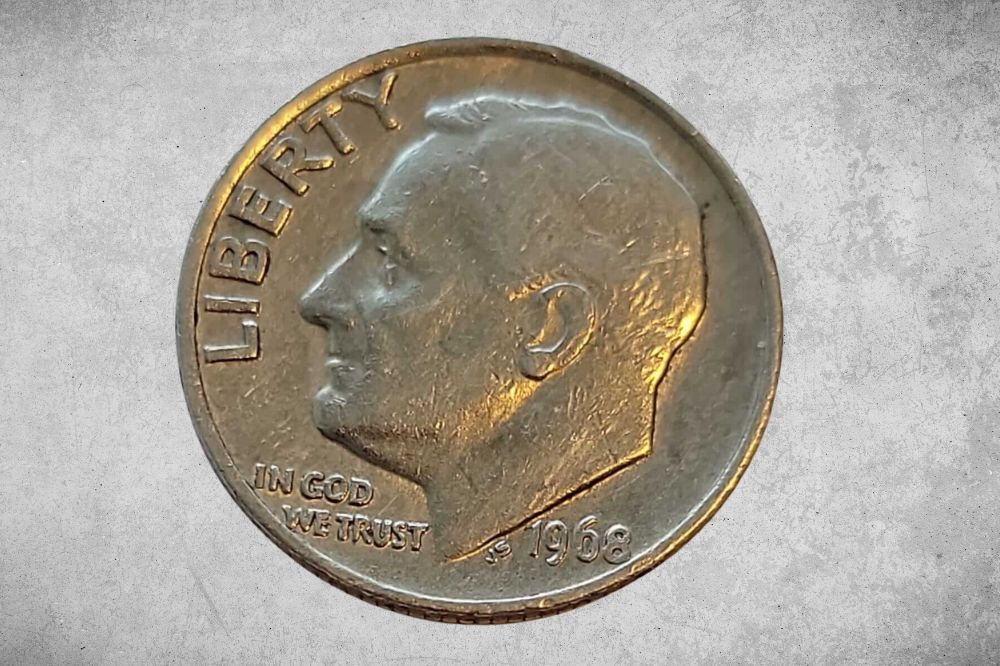The 1968 dime is a part of the Roosevelt Dime series, which began circulating in 1946. The 1968 dime, like other coins from the era, holds a special place in the hearts of collectors. This is partly because of a no-mark proof which can be incredibly valuable.
Here we’ll look at all you need to know about the 1968 dime. We’ll have a closer look at its details and varieties, and of course, its value. We will also look at the historical significance of the 1968 dime and some of the most reported errors. Let’s get started!
1968 Dime Details
- Type: Roosevelt Dime
- Quantity Produced: 908,260,186
- Designer: John R. Sinnock
- Edge: Reeded
- Shape: Round
- Coin Diameter: 17.91 mm
- Coin Thickness: 1.35 mm
- Coin Weight: 2.27 grams
- Year of Minting: 1968
- Mint Mark: None/D/S
- Place of Minting: Philadelphia, Denver, and San Francisco
- Face Value: $0.10
- $ Price: $0.10 – $40,000
Nearly a billion 1968 dimes were created which means that finding one isn’t too rare but you can still get a lot of money for these coins in mint condition.
They were produced not long after silver was taken out of all US coins in 1965. This led to the modern-day dime being made of 75% copper, along with 25% nickel. The latter is used on the outer layer to give it a shiny appearance like the classic silver coins. Over time, however, the coin can develop a darker patina due to oxidation and exposure to the elements.
In terms of their other details, they are all standard for dimes. This includes a weight of 2.27 grams (0.08 ounces), a diameter of 17.91mm, and a thickness of 1.35mm. These new specifications came into effect in 1965 and have all stayed the same since.
As with many coins, they have a reeded edge, making them difficult to counterfeit. This reeded edge has been a feature of dimes since the very start of their circulation, dating all the way back to 1796.
The 1968 Dime has Roosevelt on the obverse (front face) on the coin, along with the inscriptions of “LIBERTY” along the left edge and “In God We Trust” below Roosevelt’s chin.
On the reverse side, we see “UNITED STATES OF AMERICA” on the top and “ONE DIME” on the bottom inscribed around the edge of the coin. Through the middle, we see a torch, along with both an olive and oak branch. Threaded through the image we see the inscription of “E PLURIBUS UNUM” which is Latin for “Out of many, one”
Also Read: Top 15 Most Valuable Roosevelt Dimes Worth Money
1968 Dime Value Chart
| Coin Grade | Good | 60 | 64 | 67 |
| 1968 D Dime | $0.15 | $1 | $10 | $300-$1,000 |
| 1968 Dime | $0.15 | $1 | $10 | $300-$1,000 |
| 1968 S Proof Dime | N/A | N/A | N/A | $200-$500 |
| 1968 No S PR Dime | N/A | N/A | N/A | $40,000 |
1968 Dime Value and Varieties Guide
There are four varieties of 1968 dimes, each with its own unique features and value. These varieties are S proof, D mark, No S proof, and no mint mark business strike. The 1968 Dime was minted at three different locations: Philadelphia, Denver, and San Francisco.
The coins produced at each of these locations can be identified by their respective mint marks of D and S. Coins minted in Philadelphia have no mark. The mint marks are located on the reverse side of the coins, near the bottom but above the date.
The San Francisco mint also produced a special variety known as the “No-S” dime, which does not have a mint mark. The No-S variety of the 1968 Dime was actually an error coin that was created when the dies used to strike the coins at the San Francisco mint were not properly punched with the “S” mint mark.
1968 S Proof Dime
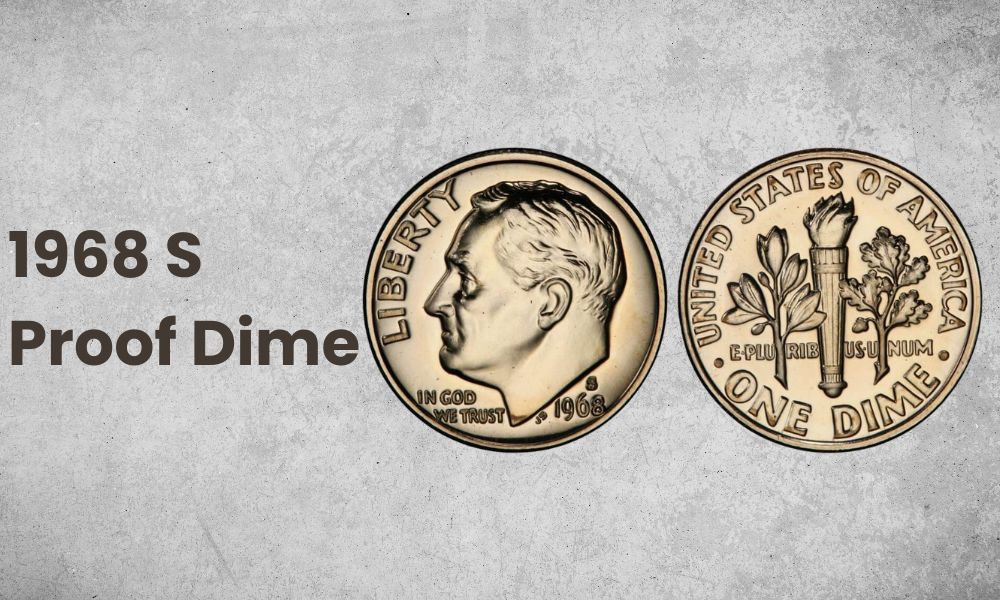
- Type: Roosevelt Dime
- Edge: Reeded
- Mint Mark: ‘S’
- Place of Minting: San Francisco
- Year of Minting: 1968
- Face Value: $0.10
- $ Price: $200 to $500
- Quantity Produced: 3,041,506
- Designer: John R. Sinnock
The “S” mint mark is an indication that the dime was minted in San Francisco. These coins were produced in lower quantities than the ones minted in Philadelphia and Denver, making them more valuable.
This is because the ones created in San Francisco were the proof coins, and not meant for circulation. The S mark variety of the 1968 dime has a current value of around $2 in good condition, but these coins are usually in mint condition.
The quantity of 1968 S dimes minted is 3,041,506, so they aren’t very rare, but a PR67 coin should be worth around $200. One such coin sold in 2022 for $540.
1968 D Dime
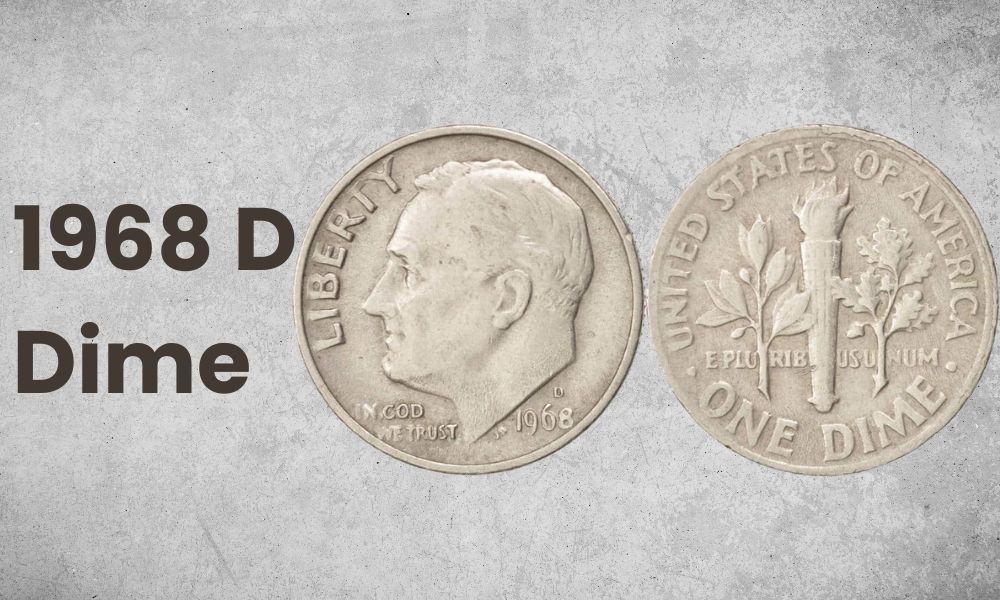
- Type: Roosevelt Dime
- Edge: Reeded
- Mint Mark: ‘D’
- Place of Minting: Denver
- Year of Minting: 1968
- Face Value: $0.10
- $ Price: $0.15 to $1,000
- Quantity Produced: 480,748,280
- Designer: John R. Sinnock
The “D” mintmark stands for Denver, and these dimes were minted in the Denver Mint. The D-mint mark variety of the 1968 dime will just be worth face value in circulated condition and around $1 in the lower grade condition.
The quantity of 1968-D dimes minted is 480,748,280. Even with that high figure, the best mint condition coins of grade 67 or above can reach around $1,000 at auction.
1968 No-Mark Dime
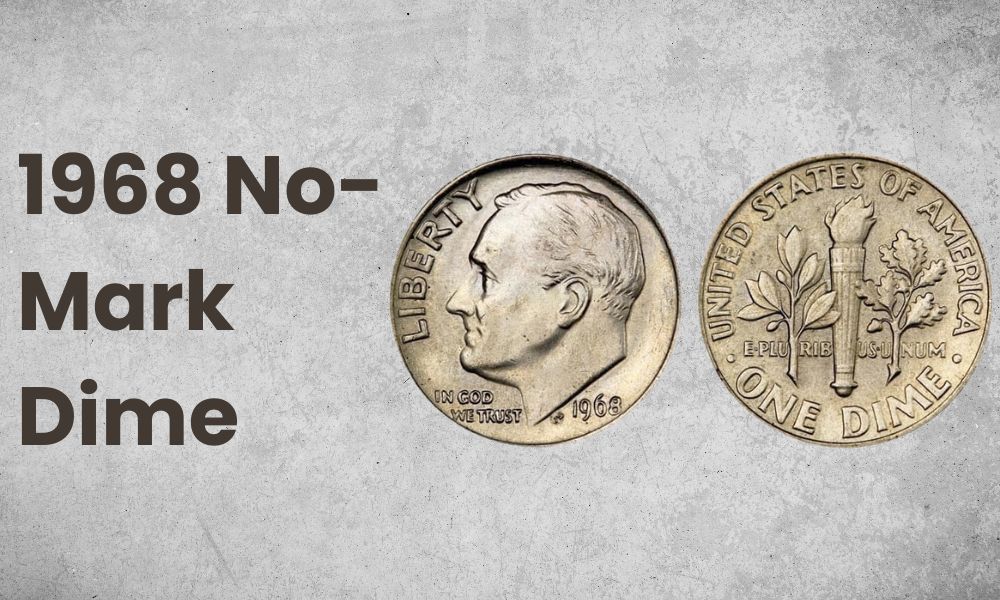
- Type: Roosevelt Dime
- Edge: Reeded
- Mint Mark: None
- Place of Minting: Philadelphia
- Year of Minting: 1968
- Face Value: $0.10
- $ Price: $0.15 to $1,000
- Quantity Produced: 424,470,400
- Designer: John R. Sinnock
As with the Denver coin, over 400 million of these dimes were made. These dimes were produced in Philadelphia and do not have a mint mark. The absence of the mintmark does not make them more valuable, and the quantity of these coins minted is 424,470,400.
The no-mintmark business strike variety of the 1968 dime is only worth face value in circulated condition and around $1 in uncirculated condition. However, as with the D mark coins, the coins can be worth over $1,000 then in perfect condition.
1968 No-S Proof Dime
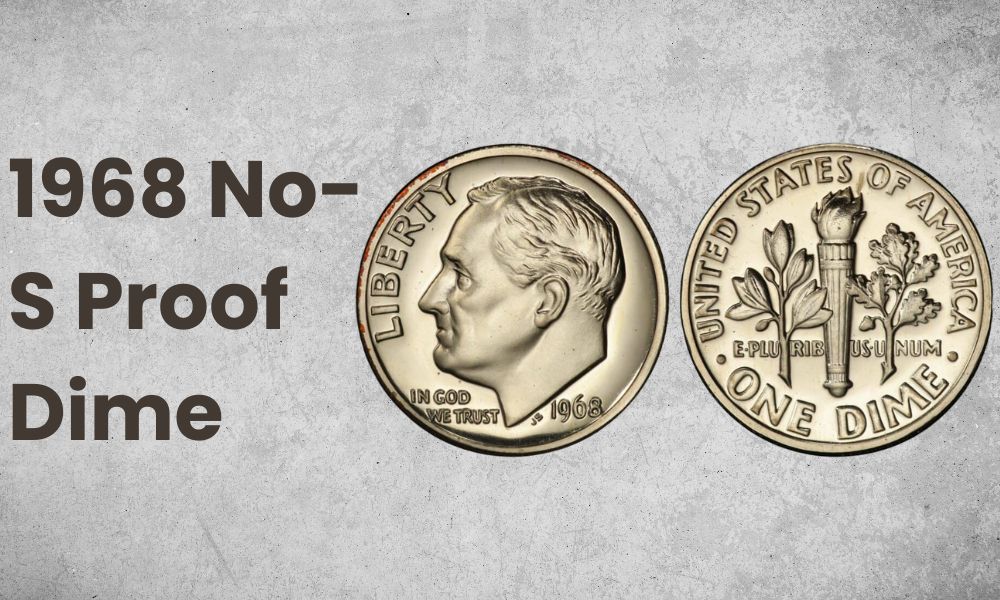
- Type: Roosevelt Dime
- Edge: Reeded
- Mint Mark: None
- Place of Minting: San Francisco
- Year of Minting: 1968
- Face Value: $0.10
- $ Price: $40,000
- Quantity Produced: 35
- Designer: John R. Sinnock
The “No-S” proof dime is a special variety of the 1968 dime that was produced in San Francisco but did not feature the mint mark. This error was caught very early, but the PCGS state that 35 were made, but no one is quite sure how many exist today.
The No-S proof variety of the 1968 dime is the most valuable of all the varieties, and in 2006, one sold at auction for $48,875 with a PR grade of 68. In recent years, similarly graded coins have sold for around the $40,000 mark.
There have been a few other years that had “No-S” dimes, but 1968 was the first instance of it happening. The rarest was in 1975, as just two of the coins were made, and are thought to be now worth around half a million dollars.!
1968 Dime History
The history of the 1968 dime can be traced back to 1946 when the first Roosevelt dimes were struck. At that time, they were made of 90% silver, but that was soon to change.
The Coinage Act of 1965 authorized the removal of silver from all circulating dimes and quarters in the United States. As a result, the composition of the dime was changed to a copper-nickel clad.
This coin was minted during a time of political and social turmoil in the United States. The country was in the midst of the Vietnam War, and protests against the war were becoming more and more widespread.
Civil rights struggles were also at the forefront of American society, and the assassinations of Martin Luther King Jr. and Robert Kennedy further added to the unrest.
The 1968 dime replaced the Winged Liberty Dime, and Roosevelt was just the 4th president to be chosen for a coin. The coin was first struck only a year after his death in 1945 and is still going strong today.
Due to its huge level of production, there generally isn’t a lot of appeal for Roosevelt dimes but those older coins are in perfect condition and mistakes such as the no-S proof and exceptions.
1968 Dime Grading
When it comes to grading coins, one of the most commonly used systems is the Sheldon grading scale, named after its creator, Dr. William H. Sheldon. This scale ranges from 1 to 70.
A coin with a grade of 1 is heavily worn and barely recognizable, while a coin with a grade of 70 is a flawless specimen with no signs of wear or imperfections.
A coin that has never been circulated and is in perfect condition is considered a “mint state” coin, while a coin that shows signs of wear and tear is considered “circulated.”
List of 1968 Dime Errors
Errors are an interesting part of the numismatic hobby. Collectors and enthusiasts are always on the lookout for these anomalies, as they can add rarity and value to a coin. The 1968 dime is no exception, and it has its own set of errors that can be found.
The 1968 dime with the most popular error, as mentioned before, was the No-S dime. This error significantly added value to the 1968 Dime. Other errors that can be made in coins, including the 1968 dime, are as follows:
1. Double Die Obverse
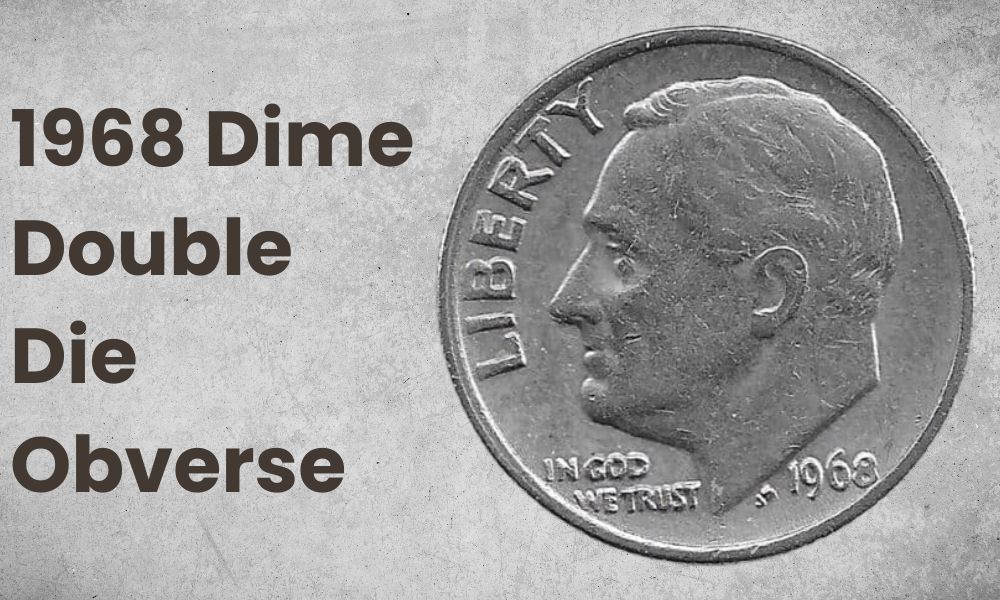
The double die obverse error occurs when the design of the coin is imprinted onto the die twice, slightly offset from each other. This results in a doubled image that appears blurry and sometimes even tripled in areas. This error is quite rare, and only a handful of 1968 dimes are known to have this error.
2. Off-Center Strike
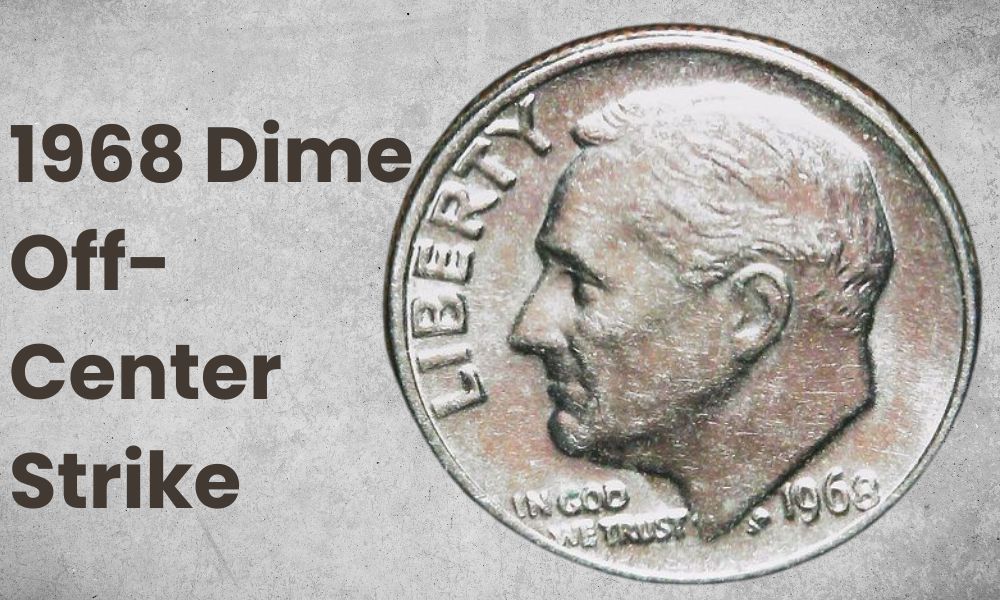
The off-center strike error happens when the blank planchet is not correctly aligned with the dies during the minting process. This results in an image that is not centered on the coin and is sometimes even partially off the edge. The degree of off-centering can vary from minor to major, with major errors being more valuable.
3. Clipped Planchet
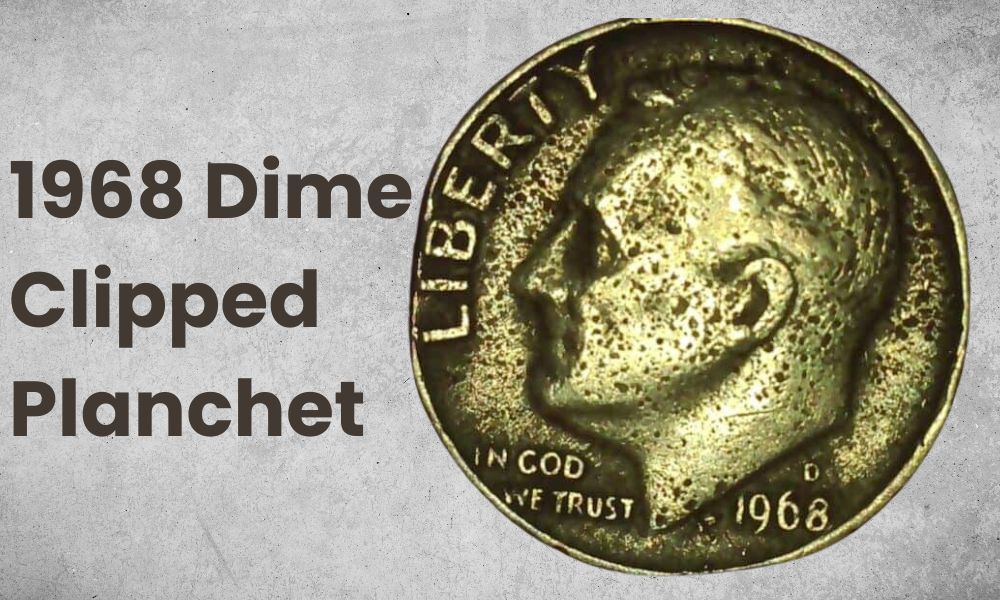
The clipped planchet error occurs when the blank planchet is not cut to the correct size before striking. This results in a coin with a curved or straight edge, depending on where the clip occurred. Clips can happen anywhere on the coin’s edge, resulting in different degrees of clipping.
4. Die Cracks
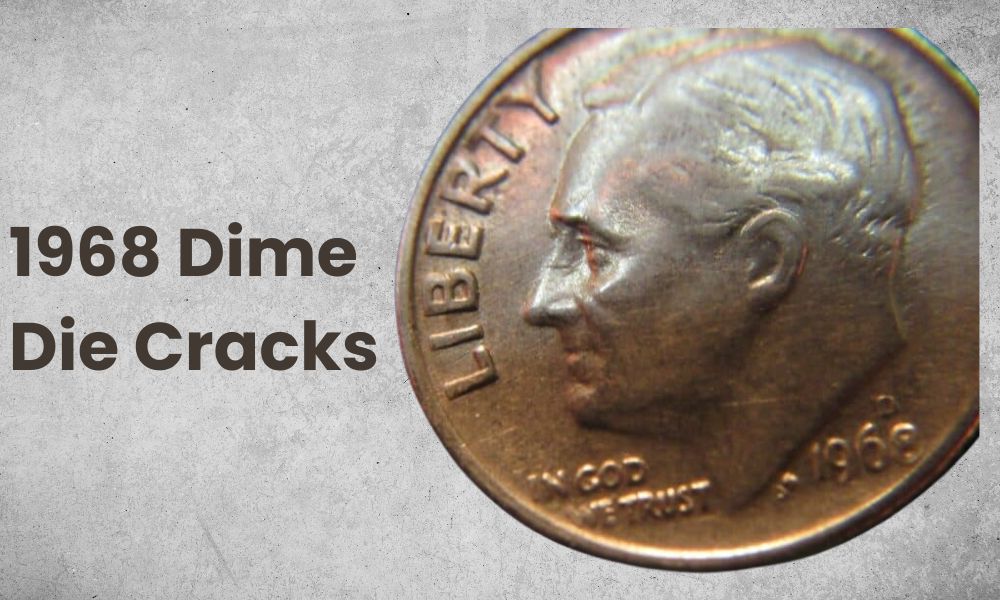
Die cracks are a common error that can occur on any coin. They happen when the dies used to strike the coins develop cracks, and those cracks show up on the coins. These cracks can occur anywhere on the coin, and they can range from very minor to very severe.
FAQs
1. What is the value of a 1968 dime?
The value of a 1968 dime depends on its condition, mintmark, and whether it is an error or a regular issue. Generally, a regular 1968 dime in good condition is worth around 10 cents, while a lower-grade mint state specimen could fetch up to $2.
The rarer varieties, such as the No-S proof and the double die obverse, can be worth several hundred to thousands of dollars. The most expensive coins have sold for over $40,000.
2. Are 1968 dimes rare?
The 1968 dime is not considered rare, but it is not particularly common either. Millions of these coins were produced by the U.S. Mint. However, some specific varieties of the 1968 dime, such as the No-S variety, can be considered rare and can command a higher value among collectors.
3. What is a clad 1968 dime?
A clad 1968 dime is a coin that was produced with a copper-nickel alloy. Clad coins have a thin layer of precious metal over a copper core and were introduced to reduce the cost of producing silver coins.
4. What is the difference between a business-strike dime and a proof 1968 dime?
A business-strike 1968 dime was made for circulation and had a more textured surface and fewer distinct details than a proof coin. Proof coins, on the other hand, were specially made for collectors and have a mirror-like surface and sharp details.
5. What is the value of a 1968-S proof dime?
The value of a 1968-S proof dime depends on its condition, but as they are proof coins, that condition is usually mint. While not as in demand as perfect circulated coins, an S proof will probably sell for a couple of hundred dollars.
6. How can I tell if my 1968 dime is a double-die obverse variety?
To identify a double die obverse 1968 dime, look for a doubling in the date, the word “LIBERTY,” or other elements on the obverse. The doubling should be visible to the naked eye and appear as a second image slightly offset from the original. It is recommended to have the coin authenticated by a professional coin grader to confirm the variety.
